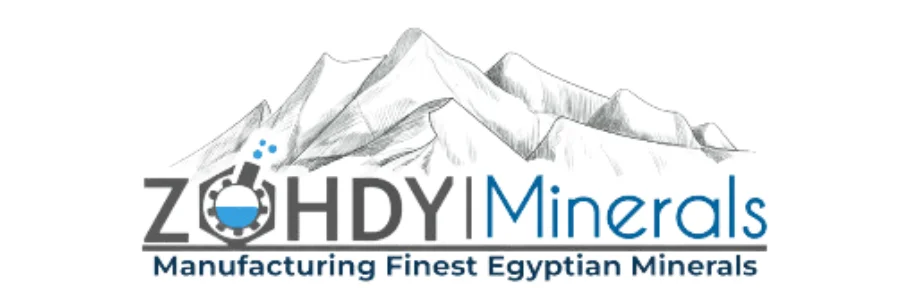Calcium Carbonate Powder in Paint Applications The global paints and coatings industry is constantly evolving, driven by technical innovations, environmental regulations, and consumer demand for high-performance, cost-effective products.
At the core of paint formulations is a delicate balance of raw materials, pigments, fillers, and binders. Among the many available fillers, calcium carbonate powder in paint applications stands out as one of the most widely used and versatile options.
Calcium carbonate powder is highly valued in the industry, not only for its cost-reduction benefits but also for its ability to enhance optical, mechanical, and processing properties. It plays a vital role in achieving smooth surfaces, vibrant colors, durability, and long-term performance.
Definition and Use of Calcium Carbonate Powder in Paint Applications
Calcium carbonate (CaCO3) is a naturally occurring compound composed of calcium, carbon, and oxygen. It is abundant in nature, making it an accessible and sustainable raw material for industries worldwide.
Sources of Calcium Carbonate Powder:
- Limestone: The most common source of CaCO3.
- Chalk: A soft, pure form, often used in producing fine powders.
- Marble: A crystalline form of CaCO3 characterized by a high degree of whiteness and brightness.
Manufacturing Processes for Calcium Carbonate Powder in Paint Applications:
- Ground Calcium Carbonate (GCC): Produced by mechanically grinding natural limestone or marble into a fine powder.
- Precipitated Calcium Carbonate (PCC): Produced chemically through a controlled precipitation process, resulting in uniform and highly pure particles.
- Treated Calcium Carbonate: Surface-treated (e.g., with stearic acid) to improve compatibility with binders and enhance dispersion.
Why is Calcium Carbonate Powder Used in Paint Applications?
The use of calcium carbonate powder in paint applications serves a greater purpose than just being a simple filler; it offers numerous technical and economic benefits, such as:
- Cost-Effectiveness: It reduces the reliance on more expensive pigments and binders.
- Brightness and Opacity: It enhances light scattering, leading to brighter paints and better hiding power.
- Flow Control: It improves flow properties, making paint application easier.
- Durability: It increases hardness, abrasion resistance, and weather stability.
- Environmental Impact: It helps to reduce Volatile Organic Compounds (VOCs) by minimizing the need for binders.
Benefits of Using Calcium Carbonate Powder in Paint Applications
Cost Reduction
Paint formulations often rely on expensive pigments, such as titanium dioxide (TiO2). Calcium carbonate powder provides a cost-effective means for partial substitution of TiO2 without compromising performance.
Improved Brightness and Opacity
The use of fine-particle calcium carbonate enhances opacity and color development, offering superior visual results for decorative and industrial coatings.
Enhanced Durability
It increases the paint’s hardness and scratch resistance, improving the lifespan of surfaces exposed to wear and environmental stress.
Smooth Finish
Due to its fine particle size and uniformity, calcium carbonate powder ensures a smooth application and an even finish on walls, wood, metal, and other surfaces.
Environmentally Friendly Solution
By reducing the binder content and supporting water-based paint formulations, calcium carbonate powder contributes to eco-friendly coatings with low VOC emissions.
Types of Calcium Carbonate Powder in Paint Applications
| Type | Key Characteristics | Ideal Applications |
| Ground Calcium Carbonate (GCC) | Most economical option; wide particle size distribution. | Interior decorative paints. |
| Precipitated Calcium Carbonate (PCC) | Controlled particle size and shape; higher brightness and purity. | High-quality paints and premium coatings. |
| Treated Calcium Carbonate | Surface treatment for improved dispersion; enhanced compatibility with resins/binders. | High-performance and weather-resistant paints. |
Applications of Calcium Carbonate Powder in Paints
- Architectural Paints: Used in interior and exterior decorative coatings for better coverage, brightness, and a smooth finish.
- Industrial Coatings: Provides durability, chemical resistance, and cost-effectiveness in protective industrial paints.
- Marine Paints: Enhances weather resistance and durability in harsh environments.
- Protective Coatings: Reinforces coatings used in construction, pipelines, and metallic surfaces.
- Decorative Paints: Improves color brilliance and application performance in premium decorative paints.
Technical Considerations for Using Calcium Carbonate in Paint Applications
- Particle Size Distribution: Smaller particles enhance opacity and smoothness, while larger particles improve durability and reduce costs.
- Whiteness and Purity: High-brightness grades are essential for achieving vibrant colors and minimizing the need for extra pigments.
- Compatibility: Surface-treated calcium carbonate ensures optimal dispersion with binders and pigments.
- Processability: Fine, free-flowing powders reduce processing time and energy consumption.
Market Insights for Calcium Carbonate Powder in Paint Applications
Key Trends
- Increasing use of nano-calcium carbonate in premium coatings.
- Rising demand for eco-friendly, low-VOC paints.
- Shift toward high-performance formulations in the construction and automotive sectors.
Opportunities
- Market expansion in the Middle East and Africa.
- Growth in infrastructure projects requiring durable and cost-effective paints.
Choosing the Right Supplier (Like Zohdy Minerals Egypt)
When sourcing calcium carbonate powder for paint applications, manufacturers should consider choosing a specialized supplier like Zohdy Minerals Egypt, which should ensure:
- Quality Certifications: Such as ISO or ASTM compliance. Zohdy Minerals Egypt offers this assurance.
- Availability and Price Stability: Zohdy Minerals Egypt is characterized by stability compared to its market counterparts.
- Technical Support for Product Integration: Zohdy Minerals Egypt consistently provides the advantage of full product integration.
- Proximity to Production Facilities: To reduce transportation costs. Zohdy Minerals Egypt always works to be everywhere to be the closest.






